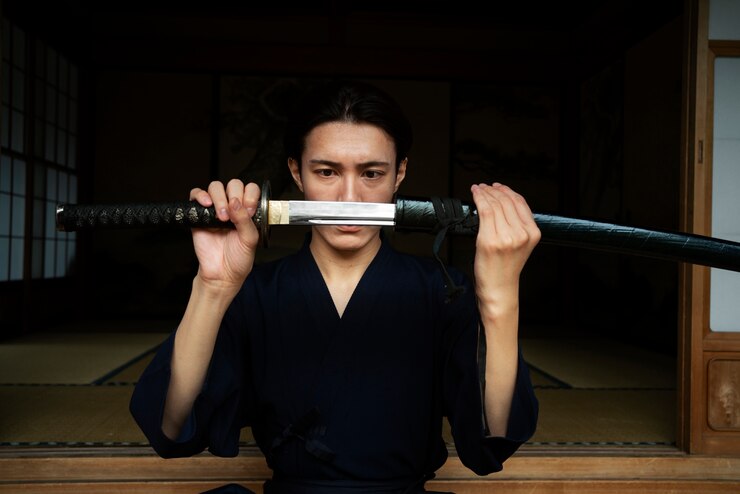Wakizashi: A Complete Guide to the Iconic Japanese Short Sword
The wakizashi, often overshadowed by its more famous counterpart, the katana, plays an equally important role in the rich history of Japanese martial culture. As a companion sword to the katana, the wakizashi was traditionally worn by samurai and symbolizes honor, precision, and practicality. This article delves into the origins, craftsmanship, and cultural significance of the wakizashi, alongside answering some frequently asked questions to provide a complete guide for enthusiasts and historians alike.
The Historical Roots of the Wakizashi
The wakizashi has been an integral part of Japanese history, dating back to the feudal period. Traditionally, samurai carried two swords, a daishō, which consisted of the katana (long sword) and the wakizashi (short sword). This pair was not only a mark of social status but also essential for self-defense and combat situations where longer weapons like the katana may not have been effective.
While the katana was primarily used for battles and open-field combat, the wakizashi played a crucial role in more confined or indoor environments, such as during seppuku (ritual suicide) or for defensive measures in smaller spaces. Over time, the wakizashi evolved from being just a practical weapon into a symbol of honor and status within Japanese society.
Craftsmanship and Design of the Wakizashi
One of the most fascinating aspects of the wakizashi is its intricate craftsmanship. Like the katana, the wakizashi was forged by skilled artisans using the traditional Japanese sword-making process, which involved repeatedly folding the steel to create a strong and sharp blade. This labor-intensive process allowed for greater durability and flexibility in the sword, making it a reliable weapon for close combat situations.
The length of the wakizashi typically ranged from 30 to 60 centimeters, although the exact measurements could vary depending on the individual swordsmith and the preferences of the samurai who commissioned it. The shorter length made the wakizashi more maneuverable in tight spaces, giving the samurai an advantage when fighting indoors or in other enclosed areas.
The hilt (tsuka) of the wakizashi was often adorned with intricate designs and symbols that reflected the status and family lineage of the samurai. Swordsmiths paid close attention to detail, ensuring that each wakizashi was not only functional but also a work of art. The scabbard (saya) was typically lacquered and sometimes embellished with ornate carvings, further emphasizing the prestige associated with this weapon.
The Role of the Wakizashi in Japanese Society
Beyond its practical uses, the wakizashi held deep cultural significance in feudal Japan. For the samurai, the wakizashi was a symbol of their warrior spirit and was treated with the utmost respect. Unlike the katana, which was primarily used in warfare, the wakizashi was often kept by the samurai at all times, even while indoors, as a form of personal protection.
The wakizashi also played a crucial role in the ritual of seppuku, a form of suicide that allowed samurai to die with honor rather than face disgrace. In this context, the wakizashi was chosen due to its shorter length, which made it easier to wield during the ritual. This somber role further cemented the wakizashi’s place in Japanese society as a weapon of both physical and symbolic importance.
In addition, the wakizashi was worn by merchants and townspeople in some regions of Japan, particularly during the Edo period, when the samurai class had more direct interaction with the general populace. While commoners were forbidden from carrying katana, the wakizashi was sometimes permitted as a form of self-defense, though these versions were often less ornate than those carried by samurai.
Differences Between the Wakizashi and Katana
Though often paired together, the wakizashi and katana have distinct differences in both design and function. The most obvious difference lies in their length. The katana, with its long, curved blade, was designed for sweeping strikes and battlefield combat, making it ideal for open spaces. On the other hand, the wakizashi’s shorter blade made it more suitable for close-quarters fighting or for use indoors where space was limited.
In terms of use, the katana was typically drawn with both hands for maximum power, while the wakizashi could be wielded with one hand. This versatility allowed the samurai to employ both swords in battle, with the katana being used for offensive strikes and the wakizashi acting as a secondary defense or counter-attack weapon. This dual-wielding technique, known as nitō-ryū (two-sword style), was famously championed by the legendary swordsman Miyamoto Musashi.
Another key difference between the two is the symbolic role each played. While the katana was often seen as the sword of battle, the wakizashi represented the sword of personal honor and was more closely associated with the samurai’s private life. This distinction is part of what makes the wakizash’i so fascinating from a cultural perspective.
Collecting and Preserving Wakizashi Today
The appeal of the wak izash’ihas endured long past its practical use as a weapon, with collectors and enthusiasts around the world seeking out these iconic short swords. Authentic wakizash’i from Japan’s feudal era are highly prized, and their value can vary greatly depending on factors like the age, condition, and historical significance of the blade.
When it comes to preserving a wakizash’i, proper care is essential to maintaining its integrity. Like all Japanese swords, the wakizash’i should be kept in a climate-controlled environment to prevent rust or corrosion from developing on the blade. Regular cleaning and oiling of the blade with specialized sword maintenance tools will help ensure its longevity.
For collectors, authenticity is key. Many modern reproductions of the wakizash’i are available, but genuine antique swords, especially those created by renowned swordsmiths, carry the most value. Collectors should also ensure they are familiar with local and international regulations regarding the ownership and transport of bladed weapons, as restrictions may apply depending on the country or region.
The Wakizashi in Modern Martial Arts and Popular Culture
While the wakizashi’s practical use in battle has long since faded, its legacy lives on in modern martial arts and popular culture. In traditional Japanese martial arts like kenjutsu and iaijutsu, students often learn to use both the katana and wakizash’i as part of their training. The wakizashi remains a key component of the daishō, and mastering its use is considered essential for understanding the full range of Japanese swordsmanship.
In popular culture, the wakizash’i has become a symbol of the samurai code and the virtues of honor, discipline, and loyalty. From classic samurai films to modern-day video games, the wakizash’i continues to capture the imagination of people around the world, representing the timeless allure of Japanese swords.
Conclusion
The wakizashi is far more than just a smaller companion to the katana. It is a symbol of the samurai’s honor, a weapon of incredible craftsmanship, and a fascinating piece of history that continues to captivate collectors and martial artists today. Whether used in close combat or carried as a personal defense, the wakizash’i embodies the values of precision, discipline, and cultural tradition that define the samurai way of life.
FAQs
What is the difference between a wakizashi and a katana?
The main difference lies in the length and function of the blades. The katana is longer and designed for battlefield combat, while the wakizashi is shorter and more suited for close-quarters fighting or indoor use.
Why was the wakizashi used for seppuku?
The wakizashi’s shorter length made it easier to wield during the ritual of seppuku, where samurai would use the blade to commit suicide and preserve their honor.
Can the wakizashi be used in modern martial arts?
Yes, many modern martial arts, such as kenjutsu and iaijutsu, include training with both the katana and wakizash’i. Mastery of both swords is considered essential in understanding traditional Japanese swordsmanship.
Are wakizashi still made today?
While their practical use as weapons has faded, modern swordsmiths continue to create wakizash’i, both as reproductions for collectors and as functional blades for martial arts practitioners.
How should a wakizashi be cared for?
Proper maintenance is key to preserving a wakizash’i. The blade should be regularly cleaned and oiled, and the sword should be stored in a climate-controlled environment to prevent rust and corrosion.







